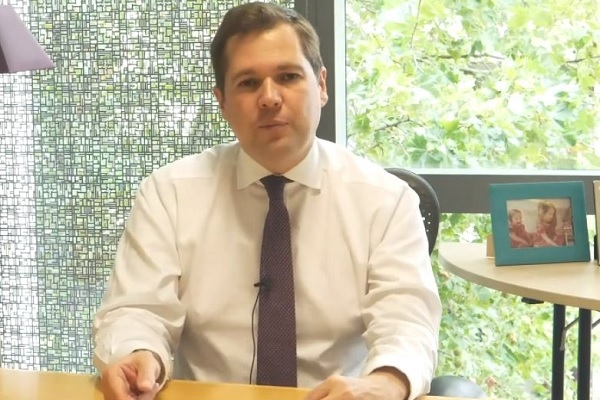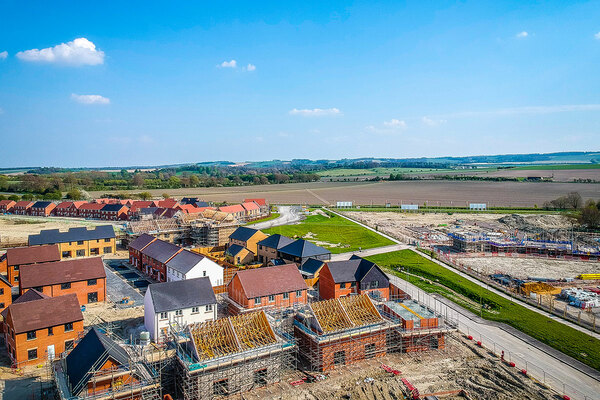You are viewing 1 of your 1 free articles
 Jules Birch
Jules BirchThe new Affordable Homes Programme is a road map to past mistakes
It is good that a part of the programme is reserved for social rent, but the rest of it echoes David Cameron’s failed legacy, writes Jules Birch
In the wake of Boris Johnson, Brexit and COVID-19, where next for affordable housing?
The past month has revealed the outlines of a government route map that combines some of Theresa May’s commitments on social rent with an update of David Cameron’s vision for homeownership and adds a big dose of planning reform to housebuilding targets.
On the plus side, housing secretary Robert Jenrick confirmed that the new Affordable Homes Programme (AHP) will include homes for social rent and more of them than in the previous one. As expressed in a speech during the Chartered Institute of Housing’s (CIH) Virtual Housing Festival and an announcement last week, that is definitely more Ms May than Mr Cameron.
However, it still falls way short of the 90,000 social rent homes a year called for by the Conservative-controlled Housing, Communities and Local Government Select Committee in July or the likely demand from 1.6 million households revealed in research for the National Housing Federation on Tuesday.
First Homes, the flagship homeownership scheme of the Johnson-Jenrick regime, is a mixture of the two.
It’s good news that the discount will remain in perpetuity rather than disappear into the pocket of the first buyer as with Starter Homes (200,000 promised, none built) and the more modest ambitions for the new scheme also make it look more deliverable.
However, like Starter Homes, it will take funding away from other forms of affordable housing delivered through the planning system.
The 2015 vintage rhetoric about the value of homeownership also ran right through the housing secretary’s speech to the CIH.
Thus the inclusion of homes for social rent in the AHP underlines “our commitment to the most vulnerable of society” (note the narrow definition of who social housing is for) while ‘most notably’ (my emphasis) there is “significant extra support for homeownership”.
That impression is only reinforced when Mr Jenrick argues that the need for First Homes has been reinforced by the coronavirus pandemic: “For the stake in society that we want to offer to people to be meaningful, it’s vital that we offer our children the ability to put down roots in the places they grew up, and that we allow people who are key workers in those communities to get on the housing ladder.
“If we’ve learned anything from the last few months, it is the absolute importance of those key workers – whether they be teachers, nurses, junior doctors, police and fire, veterans in the armed forces and others.”
That may be true, but note that he does not include supermarket staff, transport workers, delivery drivers and all the other lower-paid people whose jobs have turned out to be essential in his definition of key workers. Little wonder, because they will not be able to afford even First Homes at a discount in many parts of the country and need genuinely affordable social housing. Not much post-pandemic vision here.
Most new housing association homes for social and affordable rent will come with a right to shared ownership attached, a reminder of Mr Cameron’s failed 2015 manifesto pledge to give association tenants the Right to Buy.
Exactly how this will work (or not) remains to be seen, but the government is clearly determined to push through its green paper vision of social housing as a springboard to ownership as well as a safety net.
However, changes to shared ownership announced last week look at least as significant as the details of the new AHP. These stem from a discussion document published last year that suggested ways to make it easier to buy and sell shared ownership properties.
Buyers will be able to purchase an initial share starting at 10% rather than 25% and staircase up in 1% rather than 10% increment. Sellers will find the landlord pre-emption clause replaced with a time-limited right of first refusal.
Both of those feature in a new standard model of shared ownership put forward in the consultation response, along with a new element that did not feature in the original discussion document: a 10-year period for new shared owners where the landlord will cover the cost of any repairs. Landlords complain there was not enough discussion about this and that the proposals risk undermining the viability of development for shared ownership and reducing the finances available for cross-subsidy.
Interestingly, one of the benefits of a new simpler standard model referred to in the discussion document – its attractiveness to for-profit providers – is not mentioned in the response, although the government has shown enough previous interest in private shared ownership to suggest that this is not off the agenda.
From a consumer point of view, the consultation response does at least address three of the many problems with shared ownership.
First, valuations for buying an increased share will be made simpler and cheaper by relying on house price inflation rather than a surveyor form the Royal Institution of Chartered Surveyors to determine the price (though this does nothing about legal costs).
Second, the 10-year period with no maintenance costs addresses a fundamental flaw in the model that would become even more glaring under the new system: why should you be liable for 100% of repairs if you only own 25% of it, let alone 10%?
Third, making properties easier to sell should benefit leaseholders while removing some of the impression that landlords hold most of the cards.
However, in going some of the way to addressing these problems, the new system could create another because it looks to me as though the second and third measures contradict each other.
The new standard model will be introduced on all future shared ownership homes delivered with grant funding and there will be an expectation that it will also apply to those delivered through the planning system. So the 10-year period with no maintenance costs will only apply to future homes.
That sounds like good news if you want to buy (for 10 years anyway), but it creates a huge incentive to purchase a new home rather than an existing one that could come with repair bills attached.
That sounds like very bad news if you already own an existing shared ownership property. It may become easier to sell in theory, but in practice why would anyone buy it unless you give them a hefty discount to reflect maintenance costs (and potential future decarbonisation costs) that they could avoid on a new flat?
And all of that’s before you even consider the impact of other issues affecting the market in new build flats: the parallel leasehold and cladding scandals.
Mr Jenrick did mention cladding once in his speech, but only in the context of what the government is doing in terms of new funding and legislation.
For existing shared owners already facing increased costs and potentially on the hook for thousands of pounds each in cladding replacement costs because that funding is inadequate, a new system that only protects new owners from repair bills looks like yet another kick in the teeth.
In this, as in so much else, this is a route map that sets a bold path to the future only to end up back where it started.
Jules Birch, columnist, Inside Housing










